Linkedin Cold Outreach guide
There're three major pieces to this puzzle.

1) Your profile - What makes for a credible profile? What are some characteristics of a Linkedin profile a prospect would like to engage with? How do you make it work for you?
2) The Prospects - Who should you reach out to (what decision-makers)? How do you find them?
3) The message - What are the characteristics of a campaign that books meetings? Is there something special that works on this platform? When and how frequently to reach out?
We'll try to briefly go over all three. Why? You don't have to get a master's, you just need to know enough to get started. You just need to know the rules.
Let's start with the Profile.
The Profile
It's easy to ignore the profile and commit the mistake of directly starting to send connection requests.
This is more common with people coming from a cold-email background. Where you just need to spin up an email account from a custom domain, add a profile photo and you're ready to start sending.
It's a bit different here. Investigating the profile of a message sender is so much low friction.
The components:
We're only going to cover the important parts here and skip the ones which are not super important for today.
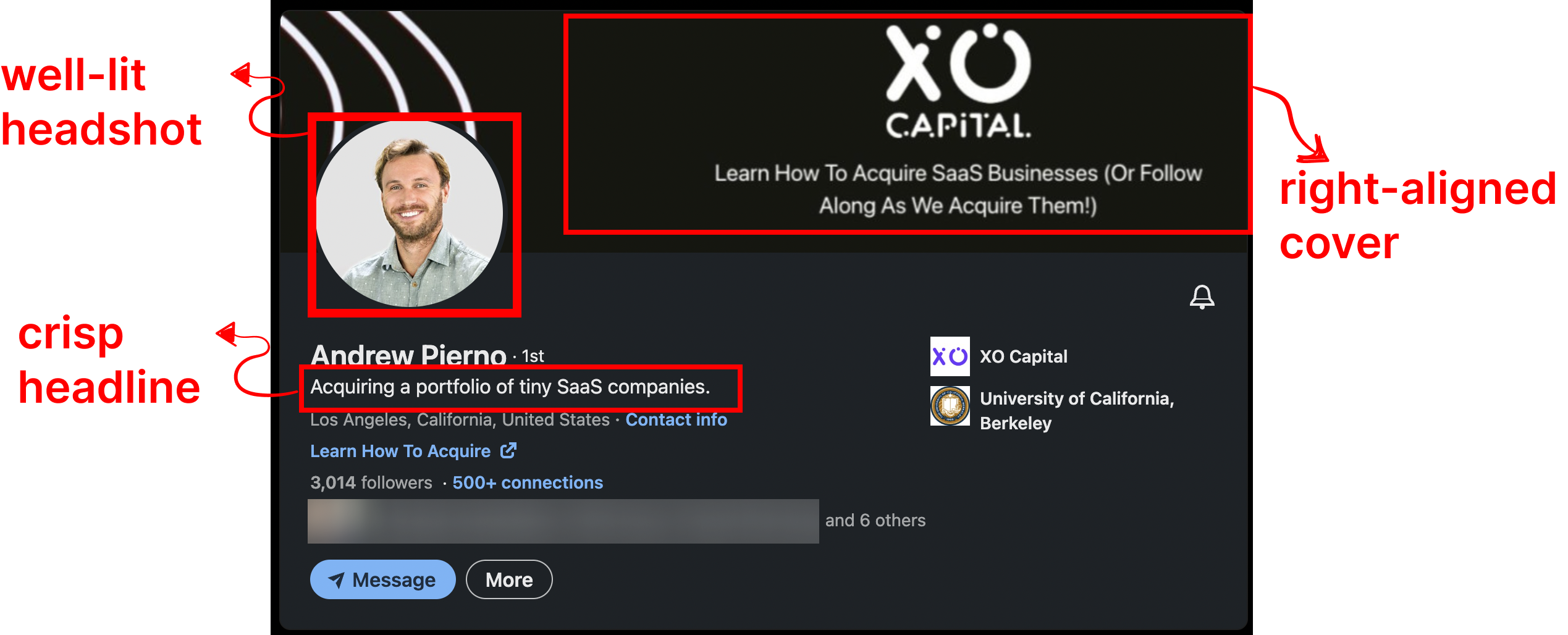
Profile Photo
Just make sure to choose a headshot that is clear, well-lit, and appropriate for a professional setting. A small smile goes a long way :)
Headline
This is the most important. Not everyone's going go to check out your entire profile but almost everyone's going to read the headline. A good practice is to include phrases about your current or previous role at different companies, anything you're really proud of, or a phrase that describes what you do. Bonus marks for some level of uniqueness. Never hurts to take some inspiration.
Worst case, just ask chatgpt to write one for you. Use it with caution.
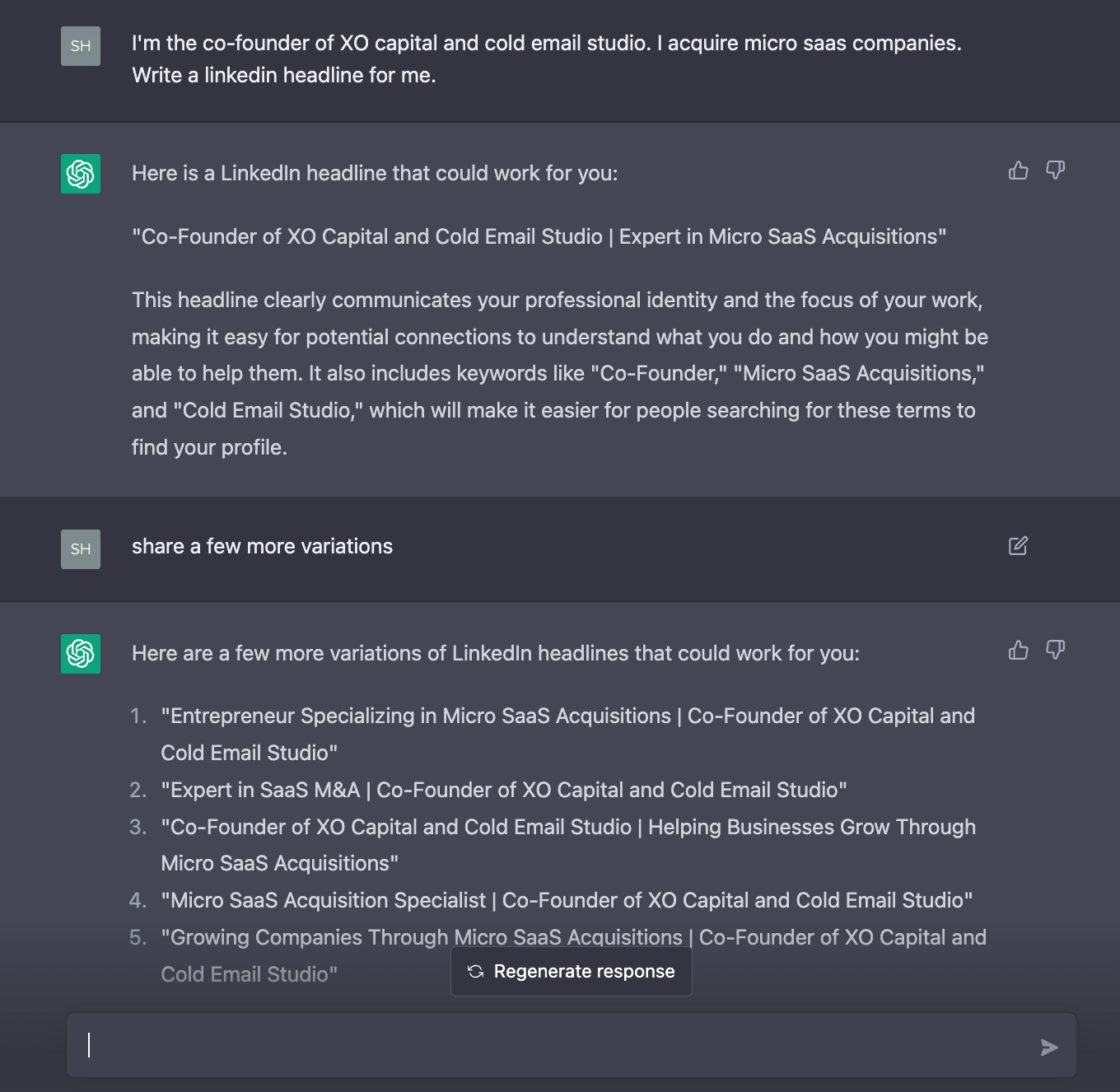
About
Not the most important one. This is probably the best place to share your story, share why you're here, and add a clear call to action.
Experience & Education
Sorry, the world follows credentials. You don't have to be a Stanford grad or a google employee but relevant experience and education in your claimed area of "expertise" will definitely register some positive signals.
Skills & Recommendations
"Do 10 people vouch for the skills you claim to possess? You must be good at it then."
This is Linkedin's skill section in a nutshell. You add you skills. People endorse those skills. You establish some extra credibility.
Recommendations work on similar lines. You can add a note about someone you shared a relationship with. Others can do the same for you.
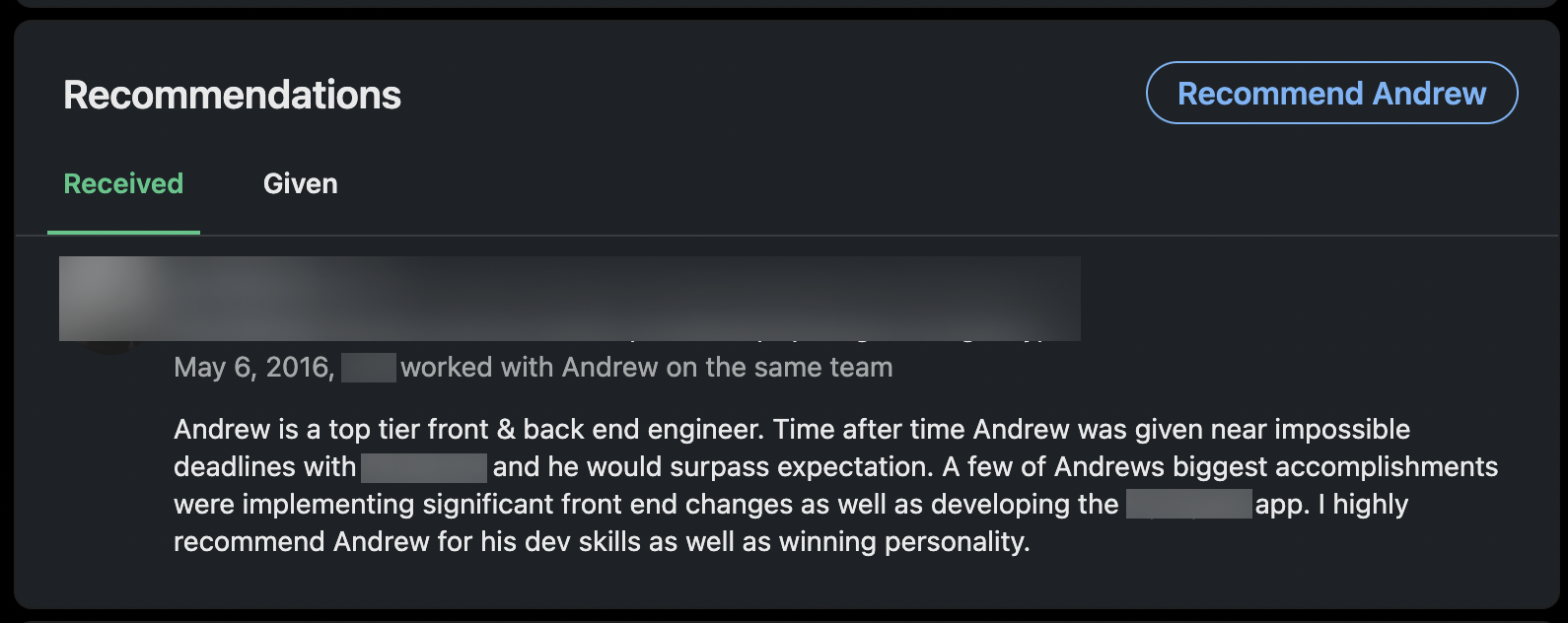
This section happens to reside super deep on the page, hence, not many people end up going through it.
Prospecting
Okay. This is one section that has a lot of tricks and hidden flows. We'll discuss the basics first and uncover the uncanny stuff later.
Forget Linkedin. Try to define your initial ICP (Ideal Customer Profile) first. If you're just starting, I understand you won't know your ICP. You start to discover it as you do more projects/listen more from your users. The larger the sample size, the more confident you could be. But.. you need to start somewhere. Throw a hypothesis. For instance, you started an SEO agency, you're at zero, and you "believe" that "early stage saas companies" would make for great customers for your service. It's okay to be proven wrong later on or adjust it as you hear feedback from the market. But I don't think it's a bad idea to start from a narrow segment and pivot, expand or further shrink from the initial thesis.
Search
Pretty obvious. Once you understand who're the decision makers you need to reach out to, it's time to finally start prospecting. The following are good places to start from:
- job title (ex: founder, vp of sales, intern etc.)
- location (ex: San francisco)
- school (ex: ucla, brown, etc.)
- industry (ex: finance, ecommerce, etc.)
- company name (ex: meta, google, etc.)
It's mostly about reverse engineering what elements you'd add to your profile if you were the prospect and understanding what elements are searchable.
See if you can spot some patterns. For instance, "founder at Stealth or co-founder at stealth" is majorly used by early-stage tech companies.
Some tricks to refine the search results:
- Exact phrases
Simply enclose the phrase with double quotes ("") to make sure to include only return profiles with that exact phrase in the headline, summary, or job title in the search results. - Union phrases
Use the OR operator to broaden your search: For example, searching for "software engineer" OR "developer" will return profiles that have either term in the headline, summary, or job title. - Intersection phrases
Use the AND operator to narrow your search: For example, searching for "software engineer" AND "San Francisco" will only return profiles that have both terms in the headline, summary, or job title. - Unwanted phrases
Use the NOT operator to exclude certain terms from your search: For example, searching for "software engineer" NOT "San Francisco" will return profiles that have "software engineer" in the headline, summary, or job title but not "San Francisco." - Priority
Use parentheses to group search terms: For example, searching for (software engineer OR developer) AND (San Francisco OR Los Angeles) will return profiles that have either "software engineer" or "developer" in the headline, summary, or job title and either "San Francisco" or "Los Angeles" in the location field.
Jobs Search
Hold tight. Few people know about this. Those who do, love it. There're entire companies that exist on the premise of this.
Let's say you have a saas that generates thousands of images for social media in a few minutes.
Go to https://www.linkedin.com/jobs/ and search for "graphic designer" or "social media manager". You have a list of companies (including the person who posted the job in most cases) who're looking to expand their social media efforts and have a budget in place. Not saying it's going to be easy but if you can nail the offer, you'll build a pretty solid case for yourself.
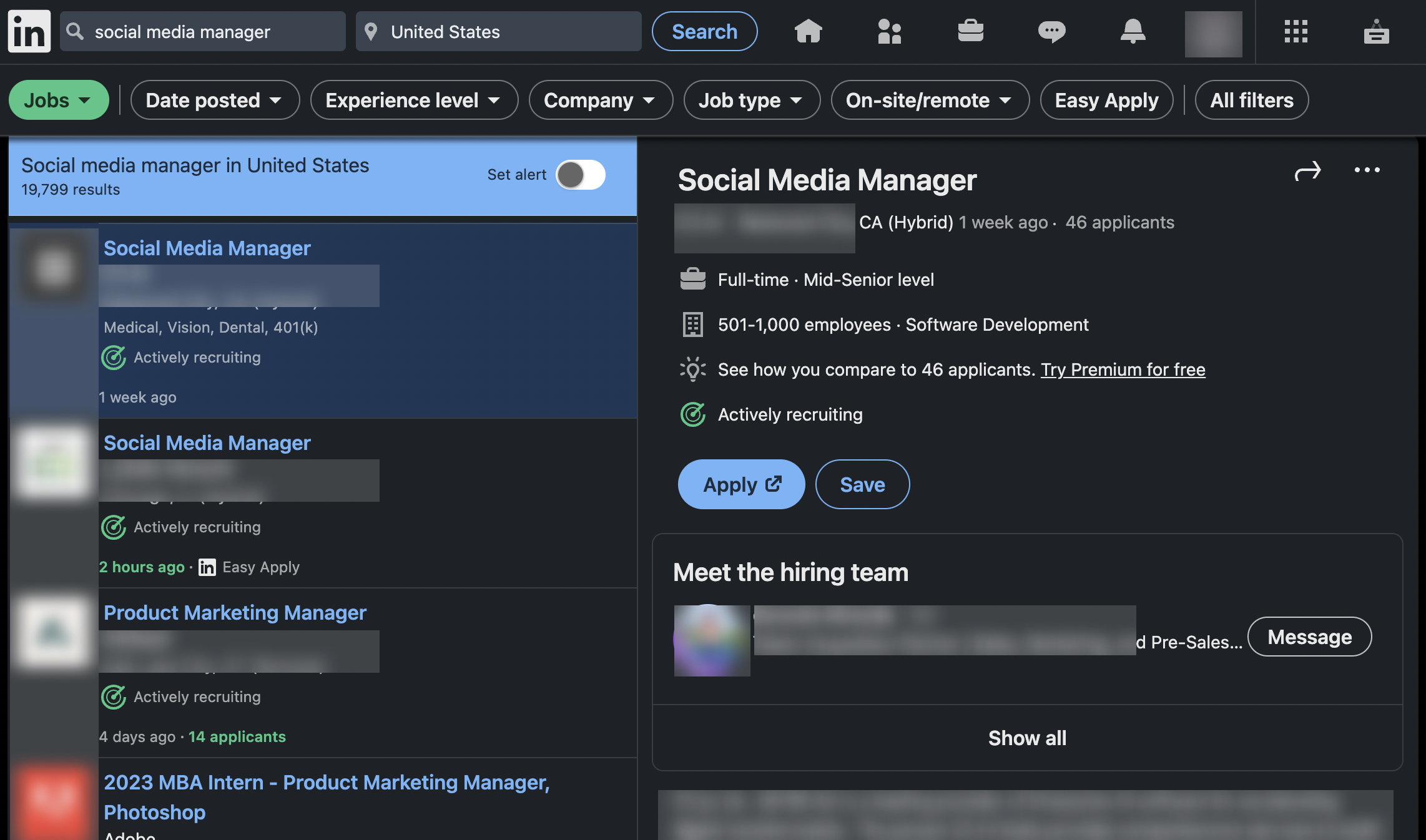
You can even set alerts for the same. How cool is that, free leads in your inbox :)
Events
Events were relaunched in 2019. In the words of Linkedin, "LinkedIn Events are an easy way to create and join professional events such as meetups, online workshops, seminars, and more. LinkedIn members can find and join communities, grow their business, network with others, and learn new skills."
What's lesser know is that event attendees can send messages to each other without having to send a connection request. Just insane.
How?
Find events (where your prospects shall hangout)
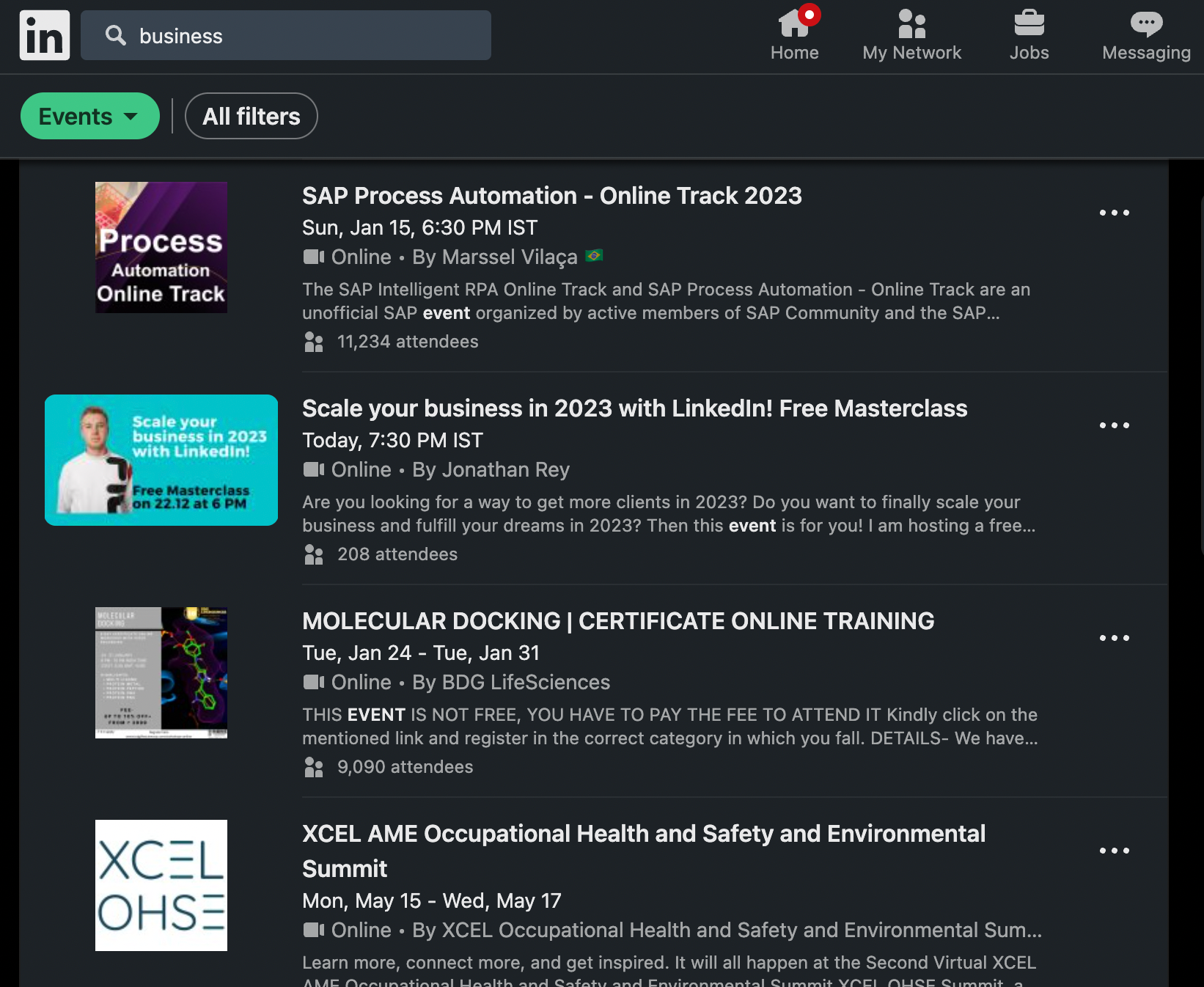
Go to the event and click on Attend

View Attendees. Message them before or after the event.
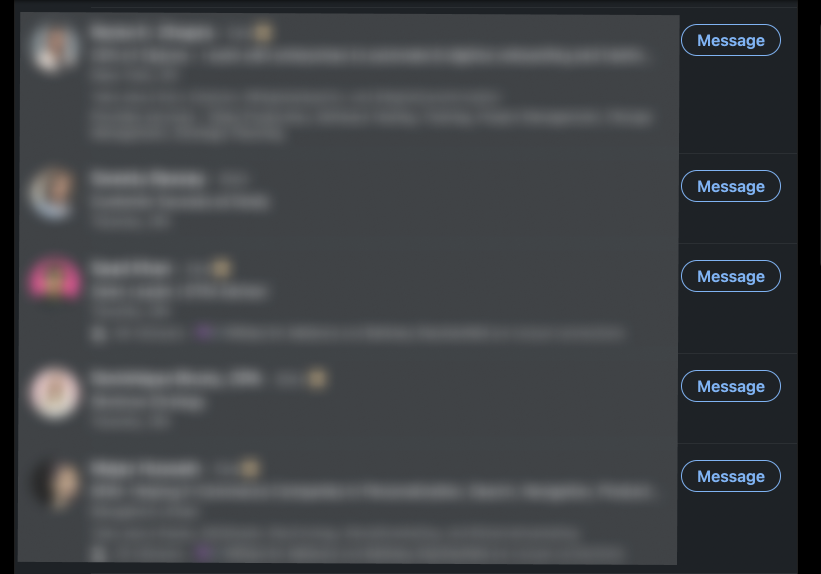
Message
Okay. The real deal. You have a nice shiny profile. You have a list of prospects you'd like to reach out to. You now need to start sending.
Connection Requests
You can safely send ~100 connection requests per week (15-25 per day - MTWTF).
Including a note, while you send one can dramatically increase the chance of getting the requested accepted.
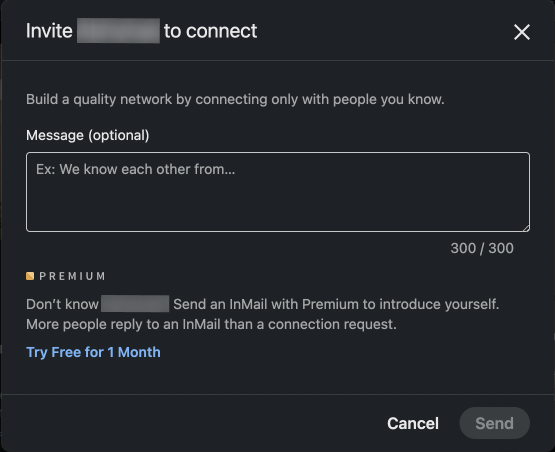
Just be mindful that the message has to be less than 300 characters.
What works?
- Personalisation
- Timing
- Appreciation
- Mention common grounds
- Sharing insights
- Offering help
- No hard selling
What's the goal?
Spark a relationship. Get them interested. Slip into their inbox.
Some messages that work
In every resource that includes a 'template' that we've shared to date, we've ranted the same thing. Don't fall for the templates, understand what makes it a successful one. Apply those principles when you draft an offer for your service tomorrow. Note down the use of personalisation. Move on. You can use them as is to get started but you need to monitor and see if it's working for you.
"Hi {{firstName}} - won't mince words - saw that you're hiring for {{role}}. You'd be a fit for [your product/service]. Open to exploring how we helped [similar company] improve [KPI or goal they'd like to achieve]"
"{{firstName}} - {{mutualConnectionName}} suggested we should talk. I working on a service [your service or offer], and would love to understand your thoughts"
"{{firstName}} - saw that you head sales at {{companyName}}. I am testing a new tool that [about the product]. Would you be open to trying it?"
"{{firstName}} - just got off listening to your interview with X. I'm stunned. Absolutely loved the part when [something interesting]"
"Hi {{firstName}}, I'm X from batch of 2011. I lead {{yourRole}} at {{yourCompanyName}}. [Reason for reaching out]. Would you be open to answering a few questions based on your experience with {{previousCompanyName}}? Can keep it async."
Inmails
Inmail = bypassing the condition of "being connected to be able to send messages".
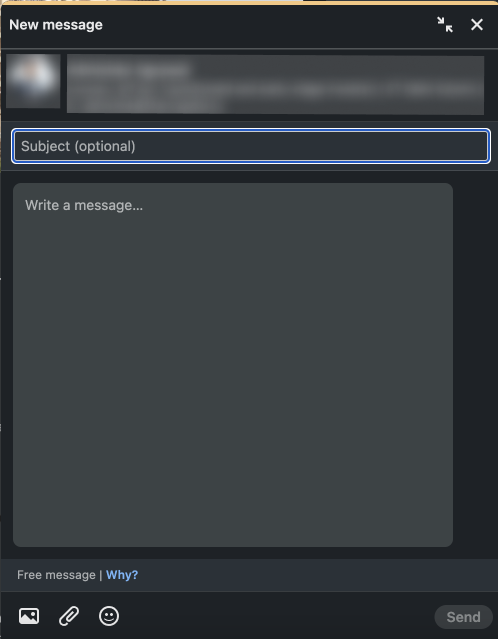
It's a premium feature. You do get to send a small number of them for free.
There're various premium plans that allow you to send up to 100 inmails per month. To unlock the limits, you need to get in touch with the Linkedin Sales Solution team. They'd even allow you to have custom CTAs inside your inmails (read "Smart Links").

Message Sequences
Sending a connection request with a note is cool. What's cooler? Being able to send follow-ups. Cold email pros well know it, follow-ups are the real deal.
Here's a doc https://wrannaman.notion.site/Master-the-art-of-writing-winning-follow-ups-to-cold-emails-7-templates-by-supersend-io-e93bbb11d4aa496fa4b56c0036635542 that contains a few tips on writing great follow-up messages. This was originally written for cold emails but the principles don't change a lot.
Automate your Linkedin outreach
Super Send helps you automate Linkedin messages, connection requests, and profile views.
Step 1
Filter out the prospects you'd like to reach out to
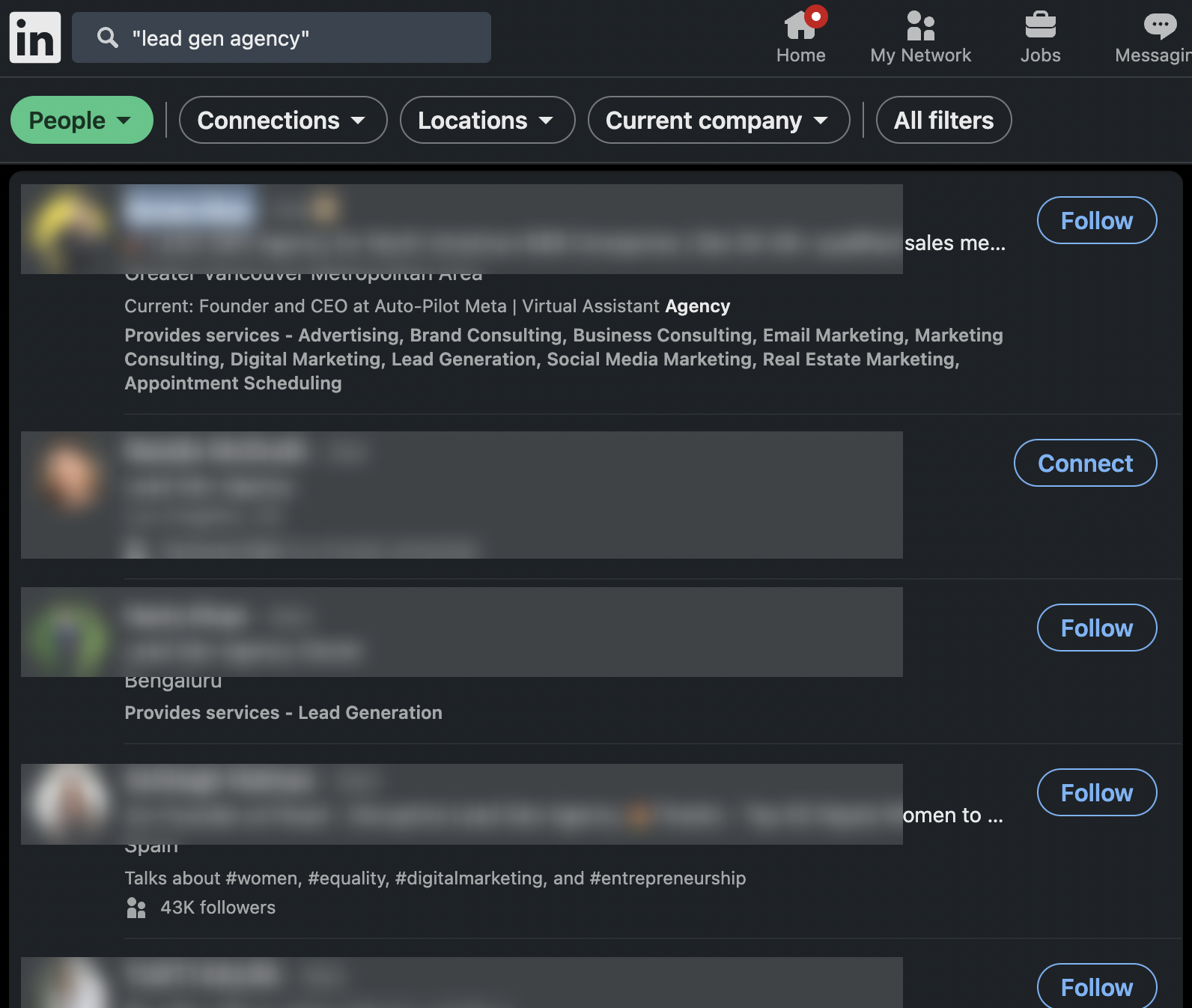
Step 2
Download this a csv.
Step 3
Upload the CSV.
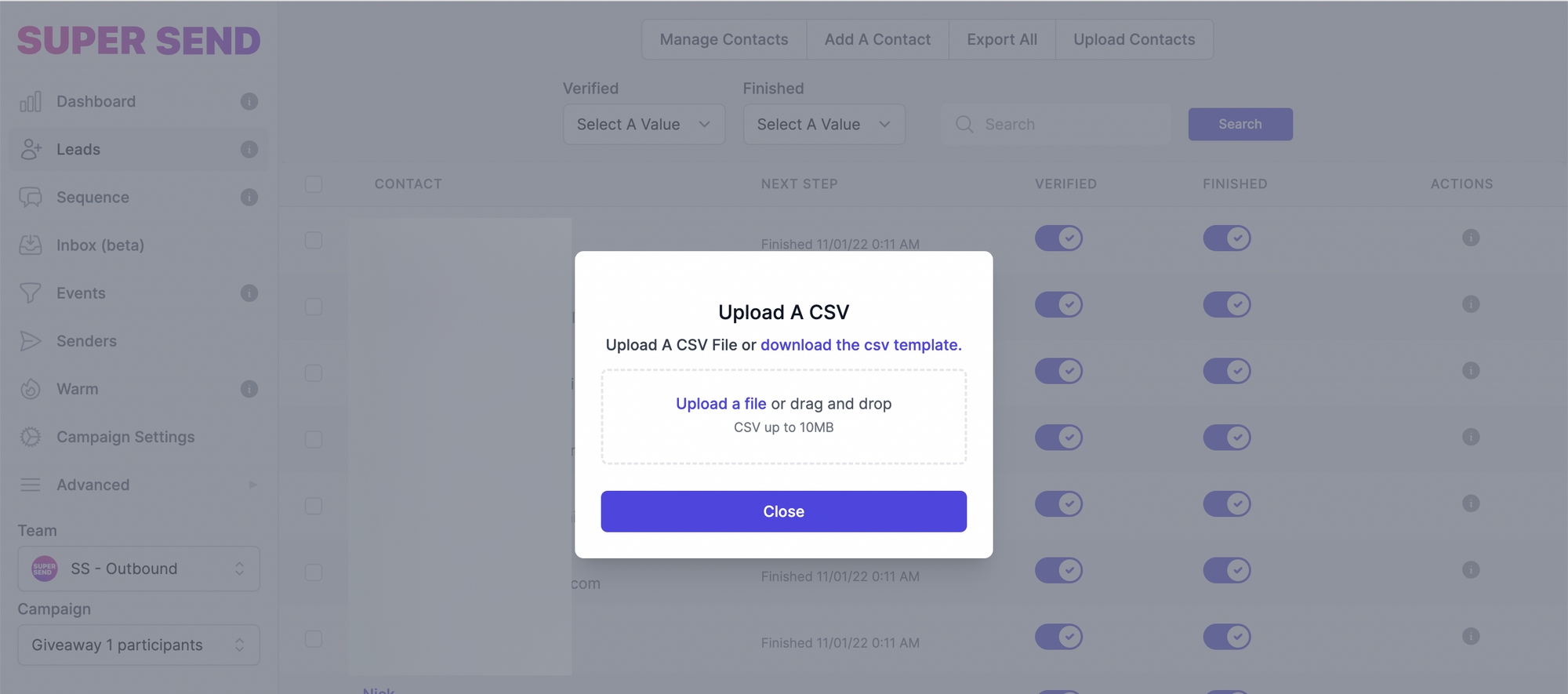
Step 4
Connect your Linkedin Account
Download our chrome extension:
https://chrome.google.com/webstore/detail/super-send/gdebmlmbenonapffoingafcjanfhjgbf?hl=en-US
Once you log in to linkedin, it will grab the credentials of whomever you are currently logged in as.
If you need to attach more than one profile, try chrome profiles to add multiple users.
You do not need to keep the web browser open for the linkedin automation to work.
Step 5
Create a sequence
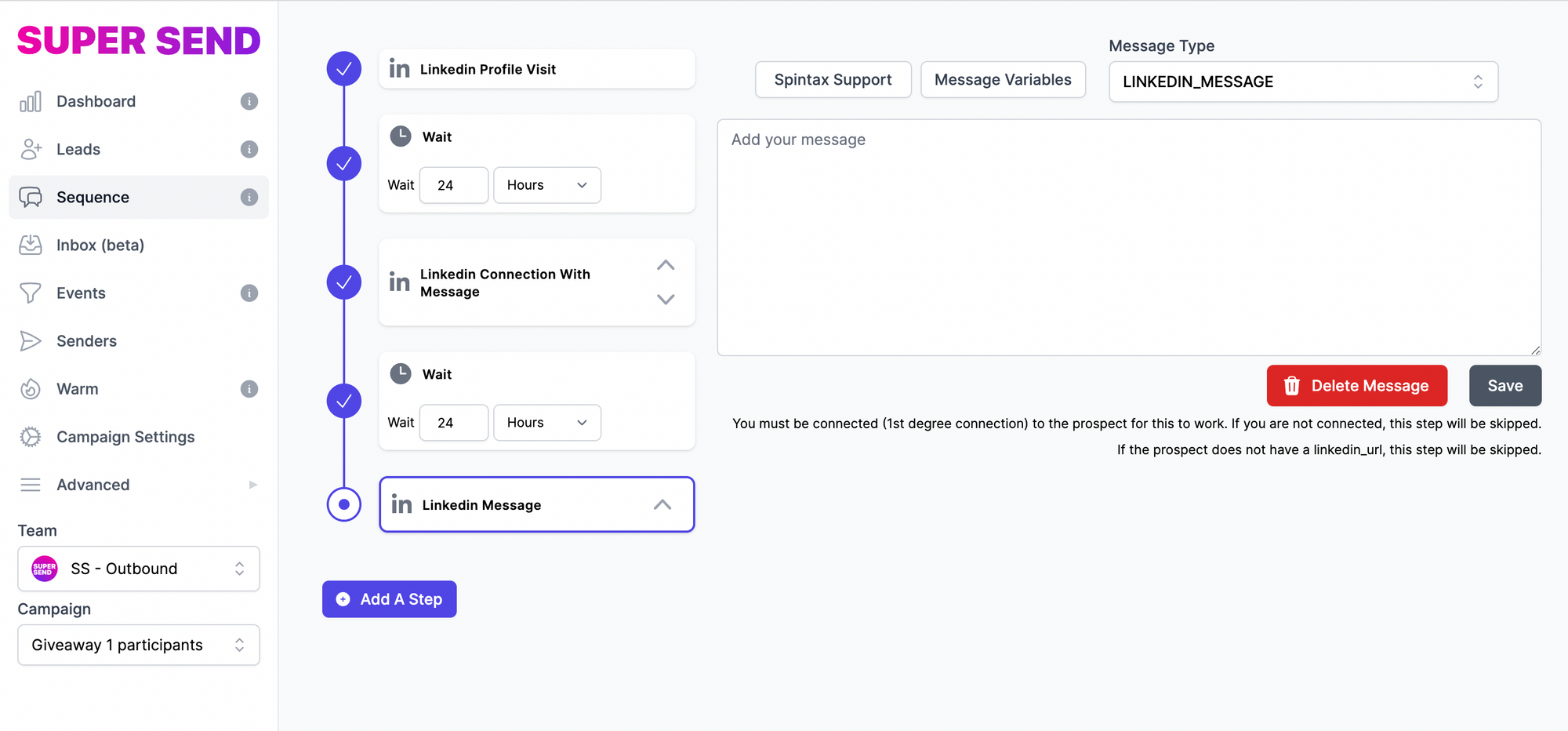
You can also add an email as the next step or a twitter dm. Truly multichannel!
Step 6
Watch Linkedin book meetings for you 😎
Some more resources
This is the same setup we use for my cold email agency doing $30k in MRR
— Andrew Pierno (@AndrewPierno) December 14, 2022
I’m revealing all the technical details about our scalable system for sending effective cold emails
Includes a 7-point checklist & some secret tactics
🔃 retweet + comment send' and I’ll dm you the doc pic.twitter.com/2jfmZlXUGy
Update: Super Send just crossed $2k in MRR 🥳
— Andrew Pierno (@AndrewPierno) December 1, 2022
Giving away a sheet of 100+ leads that raised >$1m in the last 2 months (easily worth $299)
🔁 RT + comment 'send' and I’ll DM you the doc containing:
- 100% verified emails
- linkedin url + size of round pic.twitter.com/t5yODZbV8H
The opening line in your cold email can be the difference between an amazing response rate and a terrible one
— Andrew Pierno (@AndrewPierno) November 28, 2022
I compiled 14 opening lines (not 100) + pointers I use to win
❤️ like + comment 'opening' and I’ll dm you the doc containing:
- 14 opening lines
- all imp points pic.twitter.com/GLaYyoGZ57
A well-thought CTA can easily 2x your reply rates.
— Andrew Pierno (@AndrewPierno) October 18, 2022
I compiled a list of 50+ Call to Actions (CTAs) for you to STEAL and use in cold emails or Linkedin DMs.
🔁 retweet + comment 'CTA' and I’ll dm you the doc containing:
- 50+ CTAs
- 5 tips for the perfect CTA
- 5 CTA mistakes pic.twitter.com/EecDE7qrPD
My agency has consistently hit >70% open rates for 2 years straight 🤯
— Andrew Pierno (@AndrewPierno) October 26, 2022
I compiled 40+ tested subject lines & every SECRET I know about writing a ‘winning’ subject line
🔁 retweet + comment 'subject' and I’ll dm you the doc containing
- 40+ subject lines
- all the dos and donts pic.twitter.com/iQsQRjHxbR
